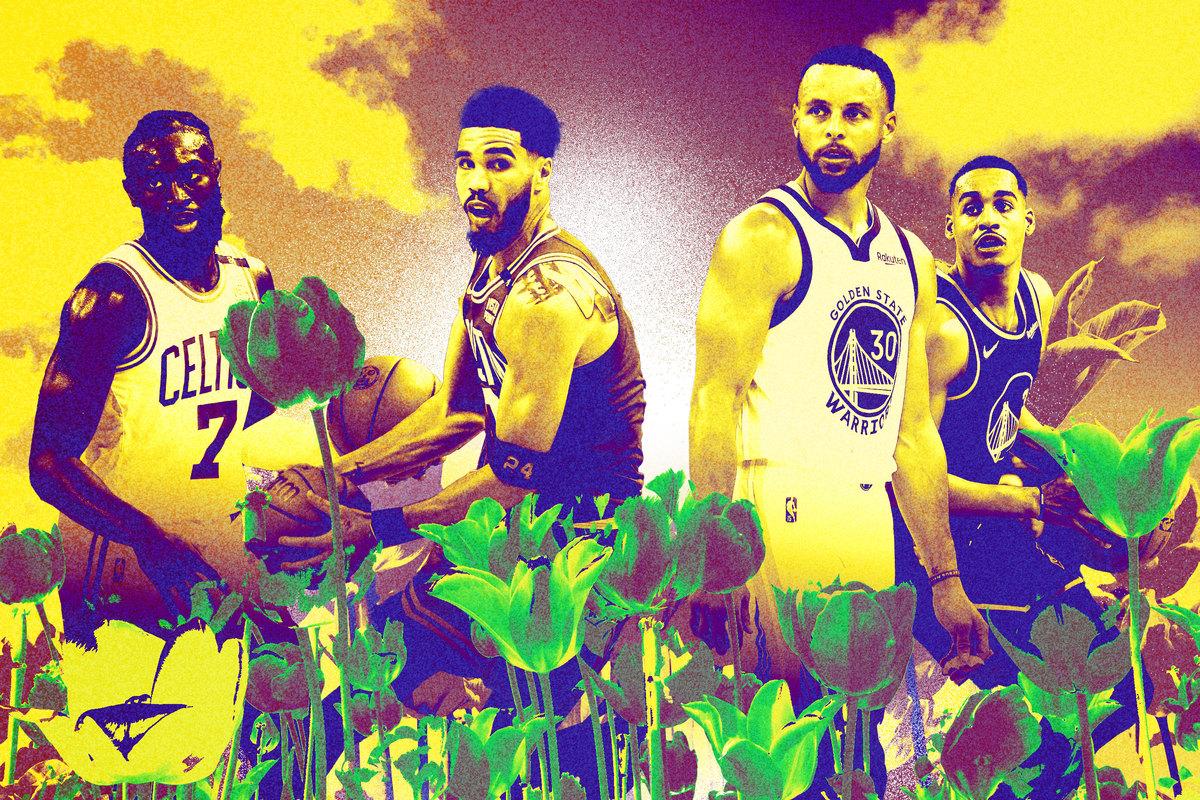
Golden State and Boston seem like massively different teams. One is a recent three-time title-winner; the other hasn’t reached the Finals since 2010. And one is led by veterans, with at least three future Hall of Famers in their 30s; the other includes only one everyday player who’s that old.
Yet the two finalists have more in common than an initial glance might suggest. Both teams rely on a sturdy defensive foundation, as the Celtics and Warriors ranked first and second, respectively, in defensive rating this regular season. Both teams ranked in the top 10 in 3-point makes and attempts. And both teams feature homegrown rosters, which set them apart from both their competition this postseason and their recent championship predecessors.
What do we mean by “homegrown”? We’re using a simple definition: a player who’s never played an NBA game for another team. So for the Warriors, Steph Curry is homegrown and Andrew Wiggins is not. For the Celtics, Jayson Tatum is homegrown and Al Horford is not. And for these finalists, who each will likely start four homegrown players in Thursday’s Game 1 of the Finals, they have many more homegrown players than not.
Throughout these playoffs so far, 70 percent of the Celtics’ minutes have gone to homegrown players, and the Warriors check in right behind them at 69 percent. Only the Grizzlies (73 percent) had a higher percentage of homegrown minutes this postseason than either of the finalists; the average across all 16 teams was only 47 percent.
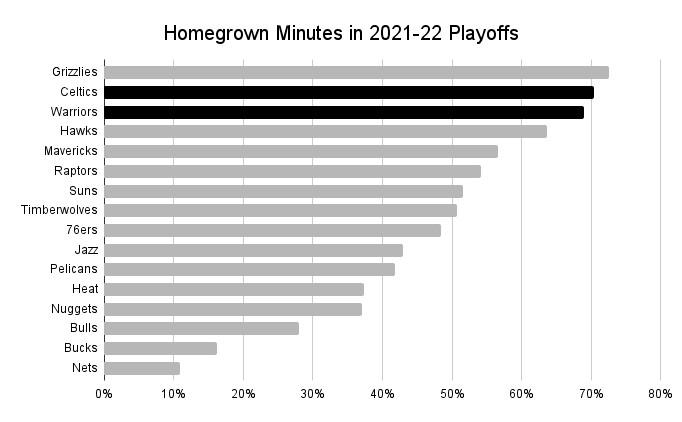
This is a strict definition, meaning it doesn’t include the likes of Khris Middleton for the Bucks, even though the former Piston didn’t blossom until he arrived in Milwaukee. Daniel Theis also doesn’t count for the Celtics this postseason, because even though he started his career in Boston, he also spent time elsewhere before returning.
Yet even with those restrictions, the composition of each Finals roster is remarkable. Out of the nine Celtics to play at least 100 minutes this postseason, Boston drafted six and added the other three all in trades within the past year.
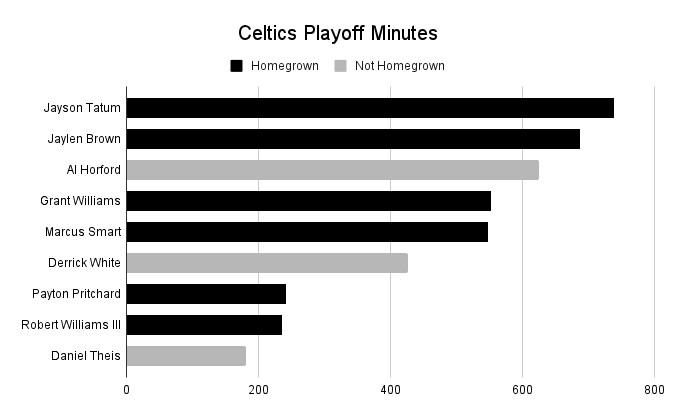
Meanwhile, Golden State drafted five of the six Warriors to play the most minutes in the playoffs, though more of the team’s depth has come from external sources.
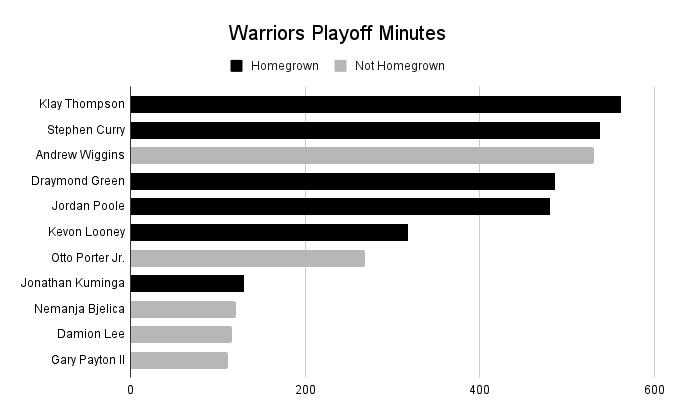
Although so much attention in the NBA centers on free agency, neither of the 2022 finalists has made much of a splash in July. The most important player in these Finals who arrived in free agency is Otto Porter Jr., a bench option the Warriors didn’t really miss when he was injured in the conference finals. The Celtics don’t have any current rotation players who signed with the team as a free agent.
While Boston and Golden State have added key players through trades, their reliance on the draft and internal development separates them not only from the other teams in the 2022 playoff bracket, but also other recent successful franchises. The Bucks drafted Giannis Antetokounmpo, their superstar—but they also needed to sign Brook Lopez as a free agent and trade for Jrue Holiday to win the title. The Lakers signed LeBron James and traded for Anthony Davis. The Raptors traded for Kawhi Leonard and Kyle Lowry.
For the first 10 years of the 16-team postseason era, which dates back to 1984, the finalists combined to receive at least 58 percent of their playoff minutes from homegrown players every year. At that time, the best teams—the Lakers, Celtics, Pistons, and Bulls—all built through the draft. But as free agency reached the NBA in the late ’80s, the homegrown percentage for Finals teams started to fall, in some cases precipitously.
In the 21st century, before this year, only 43 percent of the average finalist’s playoff minutes came from homegrown players. Sometimes, one team was mostly homegrown, but its counterpart was not, as in the Spurs-Heat matchups in the 2010s. The last time both finalists were even higher than 50 percent was 2003, when the Spurs (52 percent) beat the Nets (55 percent).
Going up to 69.7 percent, the average for the Celtics and Warriors, is even more rare. Only one other Finals matchup since 1984 boasts a higher homegrown percentage: In 1991, the Bulls and Lakers, led by homegrown stars in Michael Jordan, Scottie Pippen, Magic Johnson, and James Worthy, checked in at 69.9 percent homegrown.
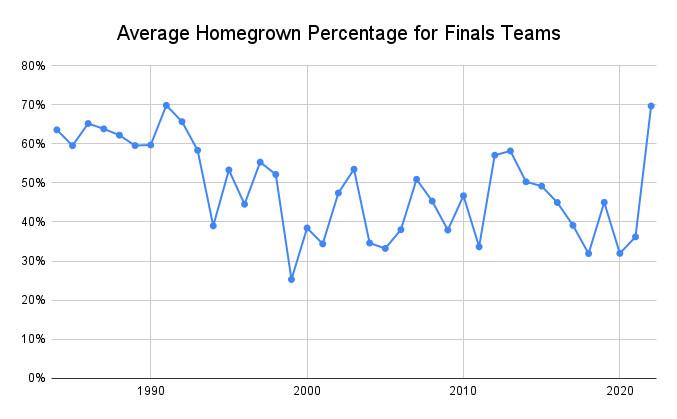
The Celtics and Warriors are complete anachronisms, then, more reminiscent of the classic rosters of decades past than the modern NBA. Here are the 10 most homegrown finalists in the modern postseason era. The Celtics and Warriors are both on the list—along with only one other team since the early 1990s.
Most Homegrown Finals Teams Since 1984
And here are the 10 least homegrown. The past two title-winners are both on this list, and the 2019 Raptors (32 percent) almost make it, too.
Least Homegrown Finals Teams Since 1984
It’s far too early to tell whether 2022 will prove a one-time fluke or the sign of a new trend. On the one hand, teams with low homegrown percentages this season, like the Bucks and Nets and Heat, will presumably still be competitive next season and beyond. The Clippers and Lakers could rejoin them, too, and both of Los Angeles’s teams are led by two non-homegrown superstars. On the other hand, the Grizzlies and Mavericks are mostly homegrown, and they’ll still be contenders. The Nuggets roster didn’t look homegrown this season, but when Jamal Murray and Michael Porter Jr. return from injury, Denver’s core players will all have arrived via the draft.
But that’s a concern for 2022-23 and beyond. In this season, at least, as all the so-called superteams hit a snag, the Celtics and Warriors triumphed with their homegrown and internally developed rosters. In this respect, this Finals doesn’t look like any other in the past few decades.

